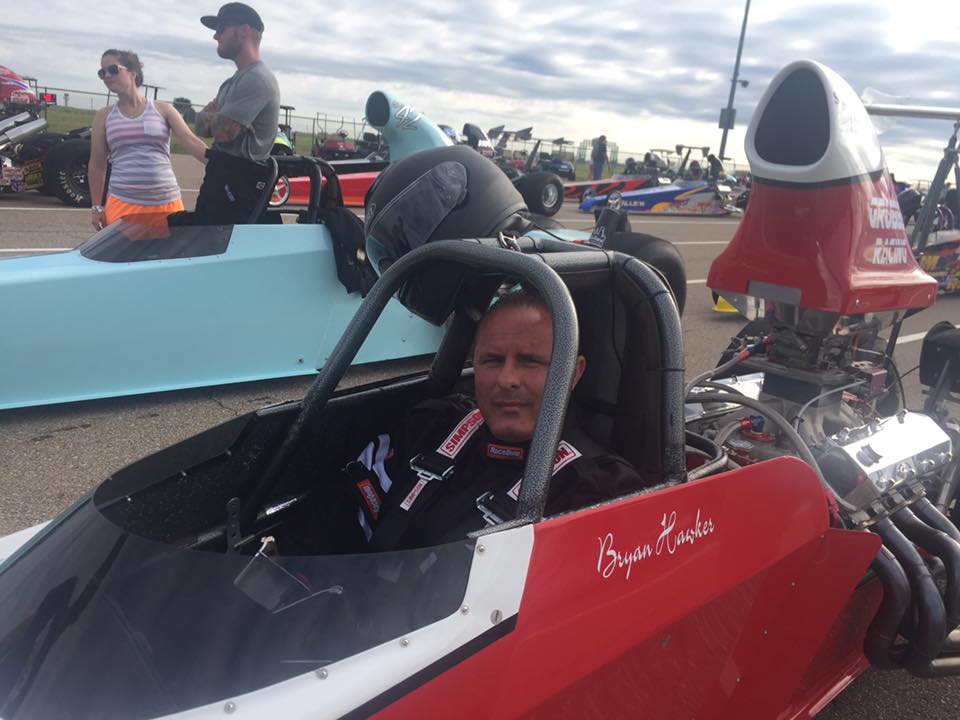
The Basics of Drag Racing by Bryan Hawker
As an avid drag racer, Bryan Hawker can tell you that nothing is as exciting a participating in a drag racing event. He says it is way more fun racing than just watching from the crowd. Although drag racing is not cheap at any level, it presents you a racing class called bracket racing. This is where all cars are allowed to compete regardless of each car’s performance level. All that matters is that you have a fast car and a desire to head to head with other racers.
Bryan Hawker advises that before you enter a drag race, you should learn as much as possible about racing and all the rules involved. A good place to start is to hang around a drag racer with a proven track record. Volunteer to work in the pits in exchange for help in learning the ropes. Experienced racers are usually stoked when people show interest in the sport and would glad to help someone eager to learn.
Bryan Hawker Explains Elapsed Time (E.T.) in Drag Racing
Drag racing, also referred to as bracket racing, is very different than other types of racing. Unlike a typical race, you don’t necessarily win just by finishing first. Bracket racing generally has four distinct elapsed time (E.T.) categories:
- Super Pro is 7.50 to 10.99 seconds
- Pro is 11.00 to 11.99 seconds
- Sportsman is 12.00 to 13.99 seconds
- Street is 14.00 seconds and slower
Each of these bracket racing categories offer several elapsed times which creates a level playing field for racers. Depending on the E.T. of your choice, your race car will be handicapped. This is called your dial-in. Make sure that you choose the appropriate dial-in. If you fail to do this you will automatically lose when your car goes faster than your selected dial-in. This is often referred to as “breaking out”, says Bryan Hawker.
Additionally, the time it takes for your rear tires to clear the beams once your car leaves the starting line is measured electronically by lights that shine across the starting line. This is called the “reaction time”. Most tracks utilize a .500 second interval between each yellow bulb on a three-amber Sportsman Christmas Tree.
Bryan Hawker further explains that your reaction time that reaction time can be expressed as a number greater than .500 which is a perfect reaction time. For example, .533 is a reasonable reaction time. Red lights turn on when a racers reaction time is less than .500. You lose automatically by leaving too soon, triggering a red light. Faster E.T. racing categories such as Super Gas and Super Comp utilize a Pro Tree. In these categories, all three amber lights at the same time .400 second before the green light. In this instance, a .400 is a perfect light on a Pro Tree.
Bryan Hawker Covers the Staging Games at the Track
A very important aspect of drag racing is staging the race car at the beginning of the race. Almost all dragstrips use the standard Pre-Stage and Stage lights. These lights are at the top of the Tree and appear as set of two small yellow lights. These are connected directly to two light beams and run across the track making up the starting line.
The Pre-Stage lights at the top of the Tree light up once the race car gets close to the starting line. The Stage lights turn on once the front tires go over the second starting line beam. Once both the Pre-Stage lights and Stage lights turn on, your car is stages. This notifies the dragstrip starter that you are good to go and ready to race.
Bryan Hawker on Increasing Reaction Time
The method of winning a bracket race is by executing a consistent and fast reaction time. You can definitely win by pulling off consistent E.T.’s. However, the best place to win a drag race is at the starting line.
For example, says Bryan Hawker, let’s assume that you start with a .532 light and then run a 14.22. Then your opponent starts with a .550 light and runs a 13.81. Even though your opponent’s race car ran closer to the dial-in by .01 second, he had a slower reaction time of .018 second. Therefore, you are the winner of the race, because your had a faster reaction time by .008 second.
As stated earlier, you will lose the race by running faster than your dial-in. However, what if both racers run quicker than their dial-ins? This is called a double-breakout, and the winner is the racer who is closer to the original dial-in.
How to Race Consistently According to Bryan Hawker
Finally, says Bray Hawker, the real key to winning drag races is to be consistent. Try to do the same thing every single time and make a ritual out of it. Try to be consistent with your burnout, staging procedure, reaction time, shift points and other details that get you to the end of the track the quickest. You can also work on your dial-in to compensate for changing track conditions.
The fun of drag racing is that any car can win. It boils down to not only having a fast car, but having fast reaction times and skills as a driver. You may not win races in the beginning, but never give up. Practice makes perfect and over time you will get better and start winning those races!